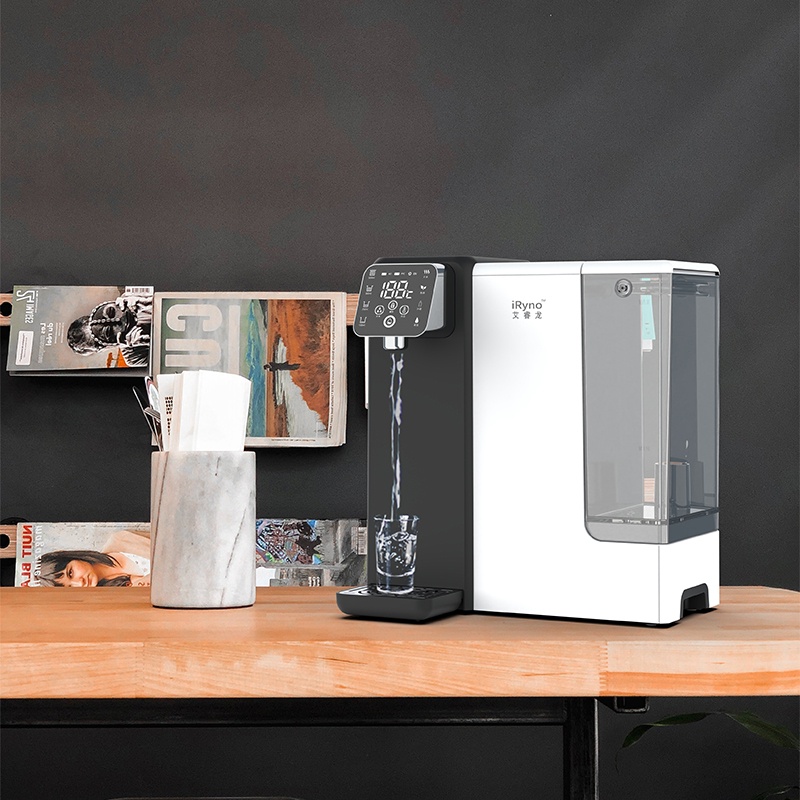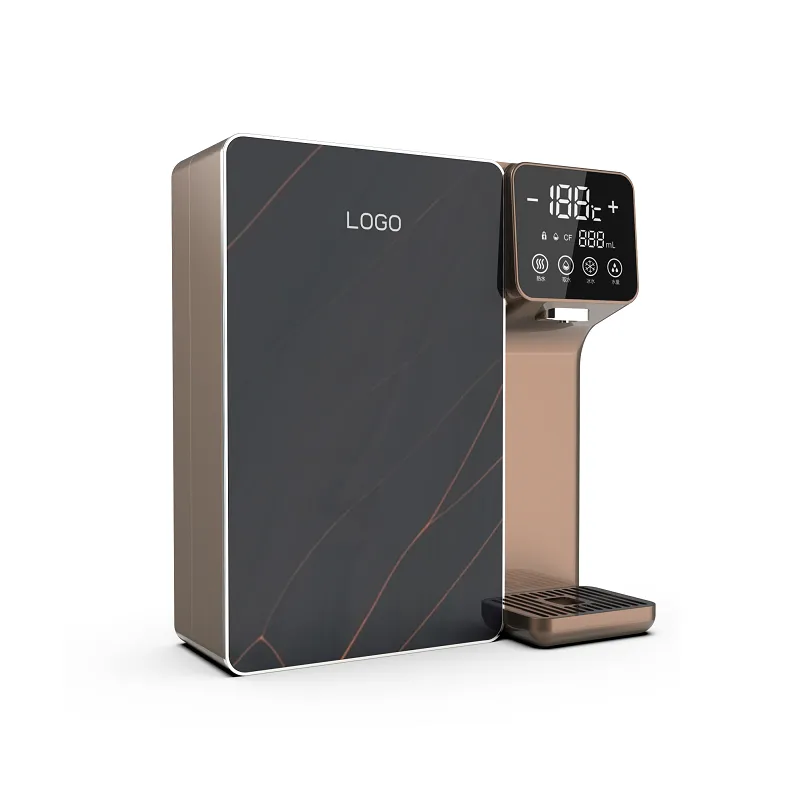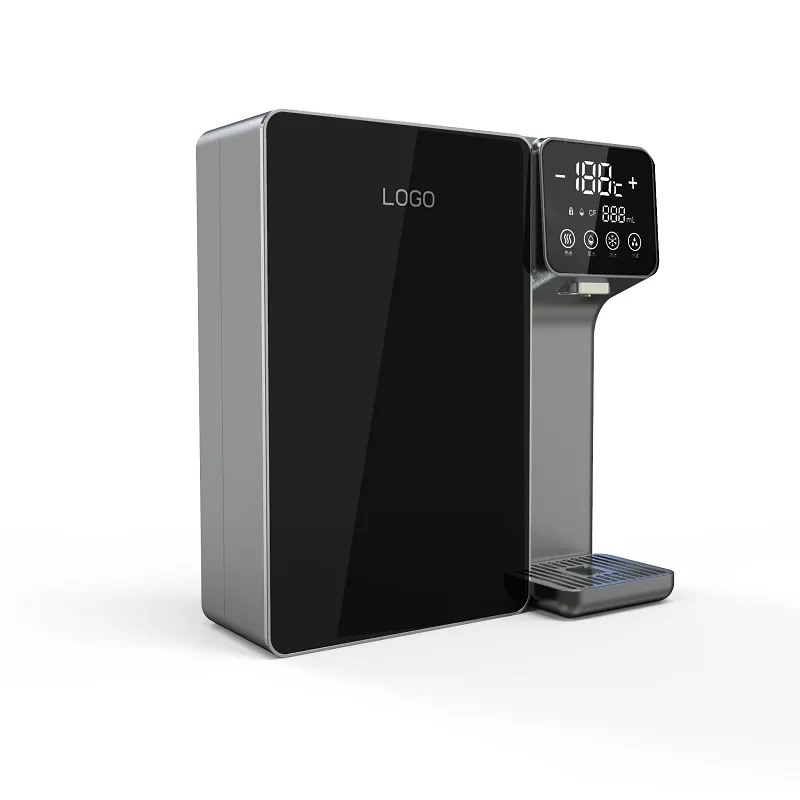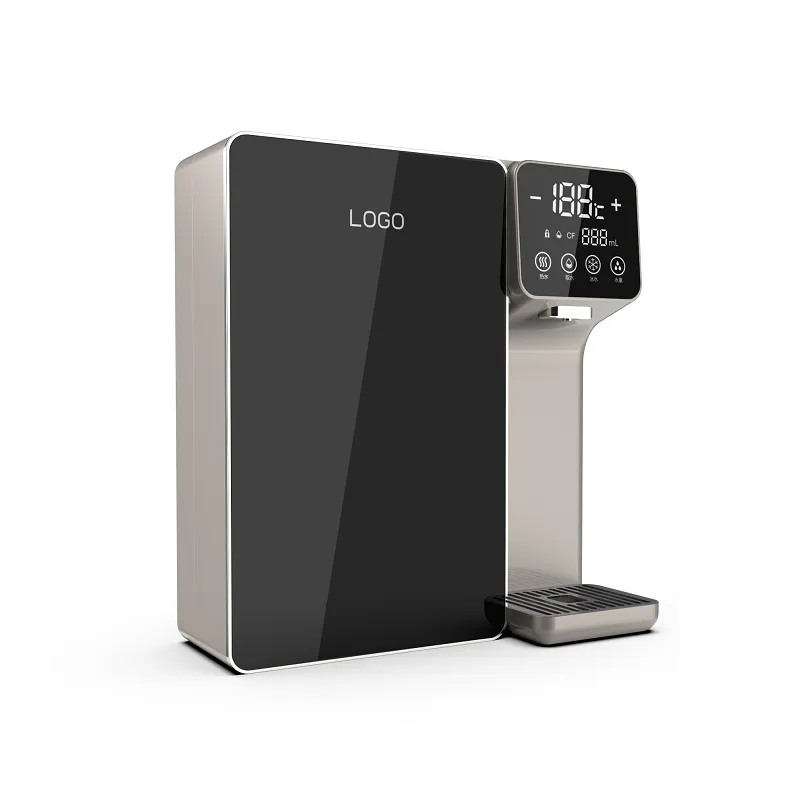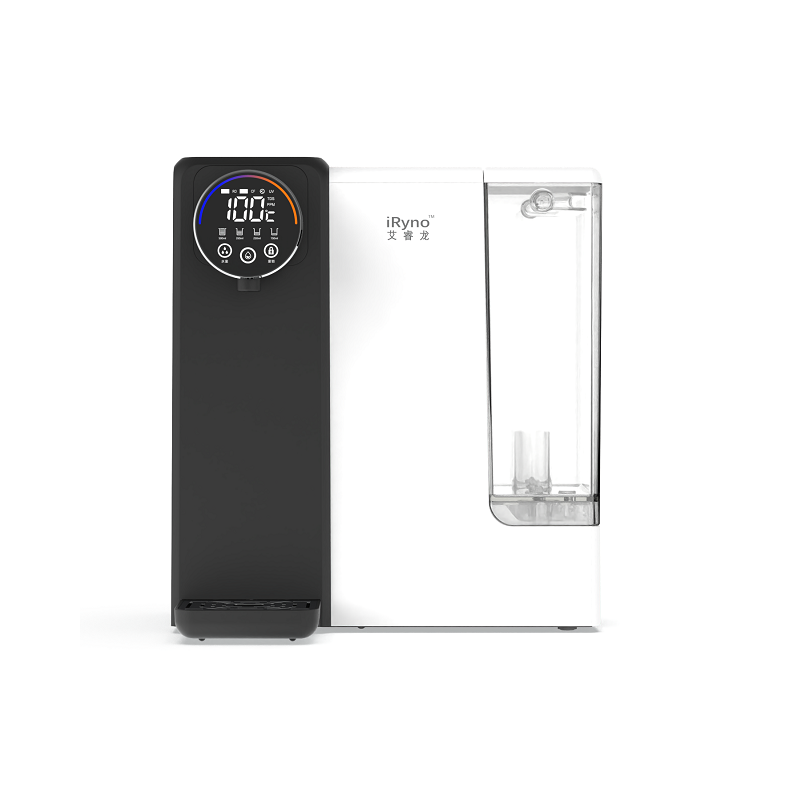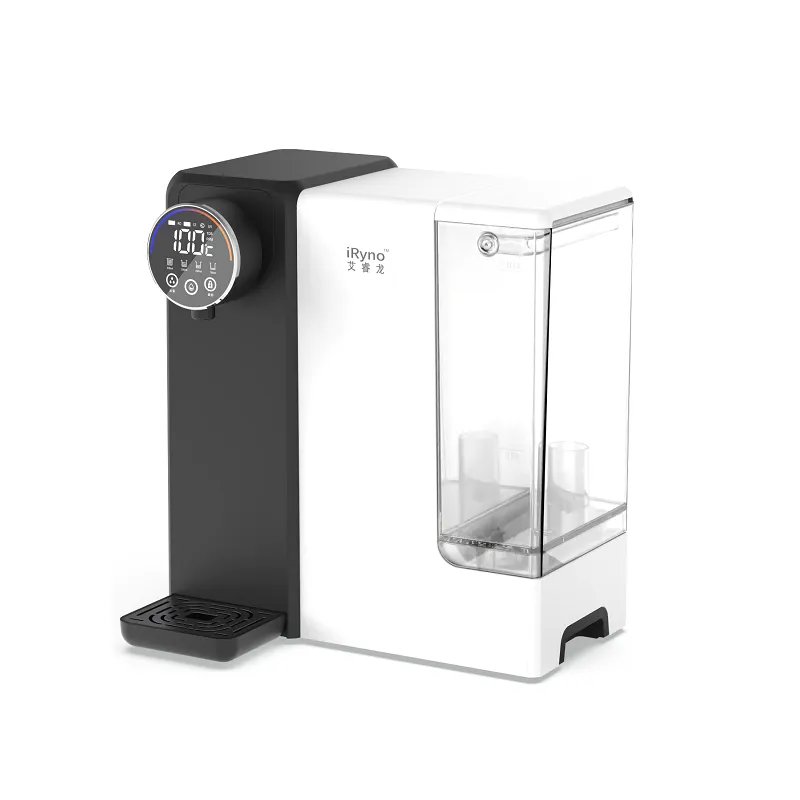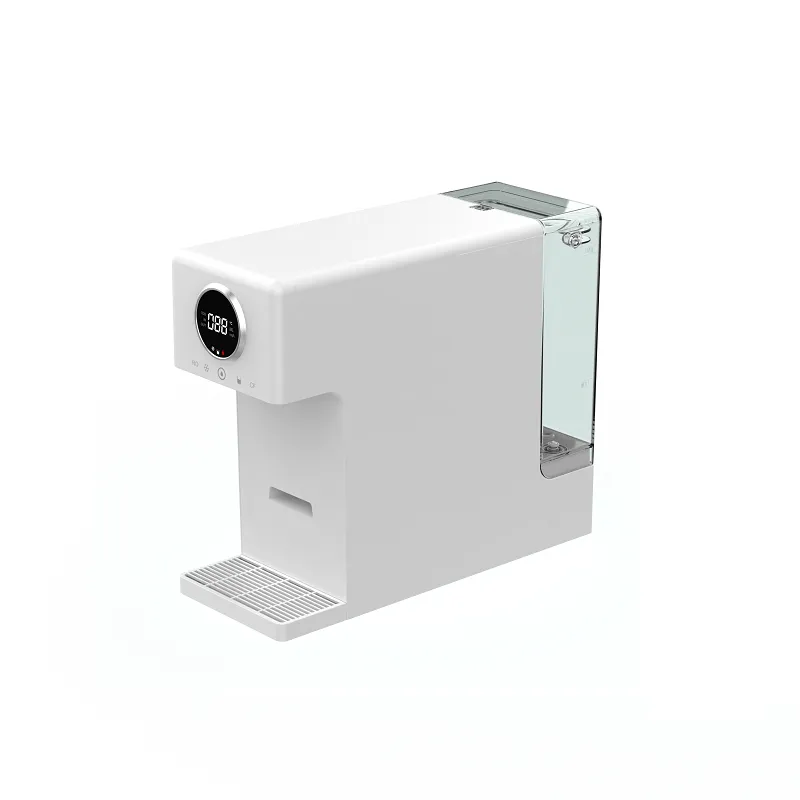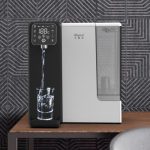desktop water purifier
· Maximum flow rate: 2L/min
· TDS display
· Not applicable Pipeline
· Not applicable for installation
· Automatic cleaning
· Reverse osmosis technology
· Real-time filter life status
· The filter element has a long service life and is easy to replace
Features
- Effectively filter bacteria, colloids, insect eggs, algae, rust, plankton, microorganisms, residual chlorine; eliminate bad odors and colors, improve taste, heavy metals, and scale.
- Smart touch control panel
- Filter life reminder
- Comply with MA certification standards, national CPC certification, NSF and FDA quality requirements.
- The water tank is disinfected by UVC in real time.
control Panel
Dimensions: 12.8 inches (D)*14.3 inches (W)*15.8 inches (H)
Tap water tank capacity: 0.92GL
Clean water tank capacity: 0.66GL
Input power: 120 VAC wall plug
Filter: 1 reverse osmosis filter
1 Composite filter element (PP filter element + front carbon + VOC filter element)
plan the details
removable water tank
Detachable Cup Holder
3 seconds to replace the filter element.
the
Double water tank design, the flow rate is increased to 2 L/MIN (normal temperature version)
Kill viruses with UVC
Tank for unfiltered water
ultraviolet light
filtered water tank
the Integrated waterway to prevent leakage and low defect rate
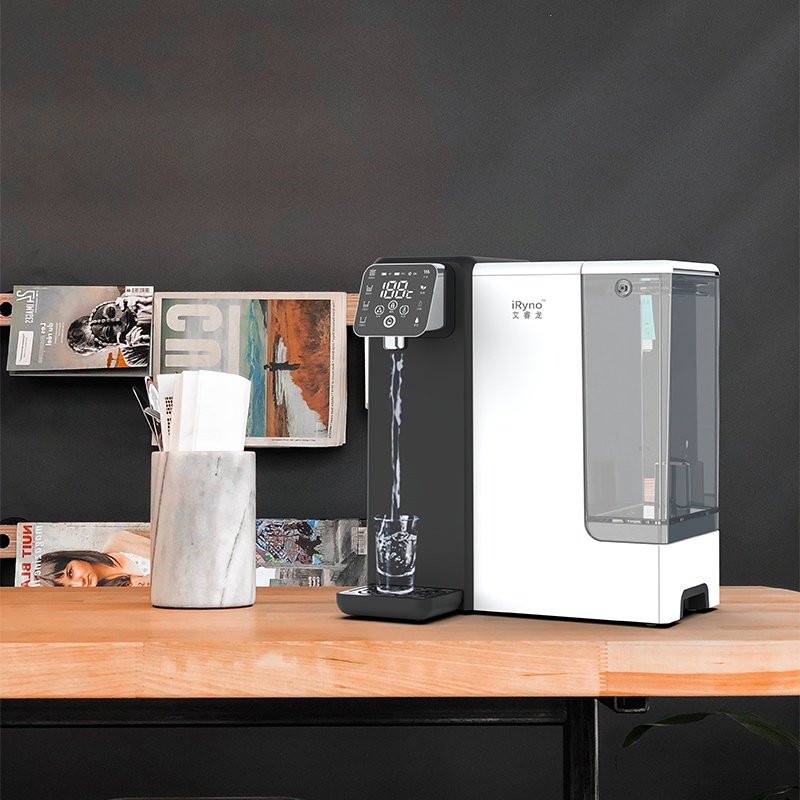
working principle
1. Reverse osmosis
The main core of reverse osmosis (RO device) is the RO membrane. The reverse osmosis pore size is 0.0001um), when tap water enters the RO membrane tube, under the action of water pressure, the dense micropores on the surface of the membrane only allow water molecules to pass through, and any other substances are trapped in the RO tube and flushed by the RO membrane discharge to ensure the service life of the membrane filter.
Filtration mechanism of reverse osmosis membrane: the diffusion of solvent and solute in the membrane follows the (Ficke) law. The model assumes that both solvents and solutes can dissolve on the surface of a homogeneous or nonporous membrane, and that molecular diffusion transports them from the membrane driven by a difference in chemical potential (usually expressed as a difference in concentration or pressure). to the lower part of the membrane.
2. Each filter effect
PP cotton: The filter pore size is 5 microns, which can effectively filter visible impurities such as sediment, rust, macromolecular impurities, and suspended solids in water;
Pre-activated carbon: The filtration accuracy is 1 micron, using high-quality activated carbon, which can effectively absorb harmful substances such as color difference and odor, residual chlorine, and some heavy metals in water.
Reverse osmosis filter element: The filtration accuracy reaches 0.0001 micron, only allowing water molecules and dissolved oxygen to pass through. Reverse osmosis technology cooperates with other filtration technologies to intercept and eliminate almost all impurities in water, such as pesticides, bacteria, viruses, heavy metals and other harmful substances.
Post activated carbon: the filtration accuracy is 1 micron, which improves the taste of the water and adjusts the pH value, making the water taste sweet, clear and delicious.
3. TDS (Total Dissolved Solids)
TDS refers to the concentration of total soluble substances in water, in milligrams per liter (mg/L), which mainly reflects the relationship between the concentration of calcium, magnesium, potassium and other metal ions in water and the hardness and conductivity of water. The principle of its measured value is relatively simple, which is to indirectly measure the purity of water through resistance, because pure water is an insulator, natural water is rich in inorganic salts and organic substances, so it becomes a conductor, and more impurities in ionic impurities, water has a higher conductivity. In other words, the TDS value reflects the total amount of conductive substances in the water. This value only indirectly reflects the quality of the water.

